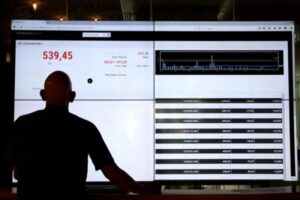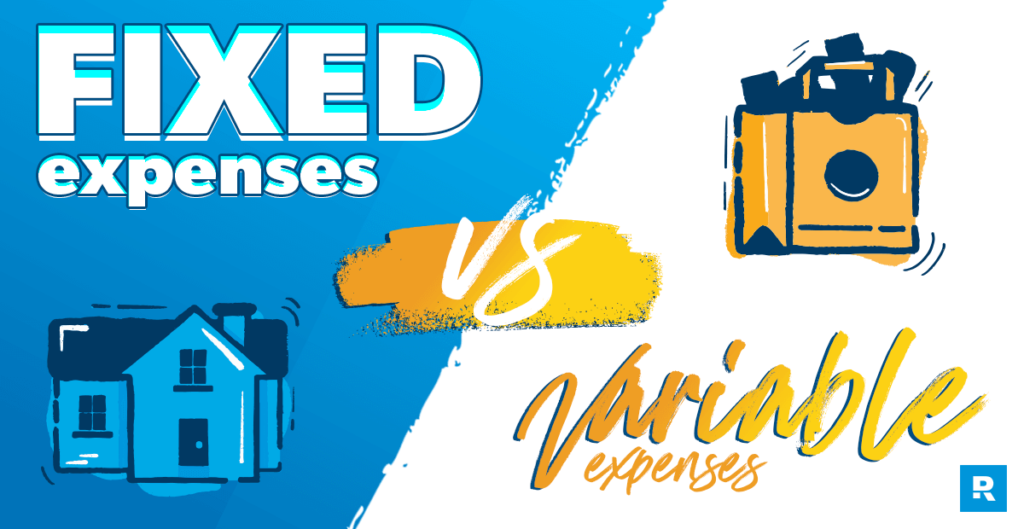I’ve been teaching people how to budget their best for years—and I’ve got good news: When it comes to winning with money, you don’t need a degree in finance. You don’t even have to remember all the definitions from your high school economics class. (Thank goodness, right?)
Still, understanding a few key terms and how they affect your money is helpful. For example—fixed and variable expenses. Let’s break down what they are, ways to save money on each, and how to get them covered in your budget.
What Are Fixed Expenses?
Fixed expenses are the items in your budget that pretty much stay the same amount month after month.
Here are some examples of fixed expenses:
- Mortgage or rent
- Gym memberships
- Most insurances
- Streaming services
- Phone bill
- Internet
- Subscriptions
- Day care
Now, some of these costs go up annually, like how your TV streaming service costs more after your first year (sneaky sneaky). And some go up if you have a life change, like adding a new line to the phone bill for your teen. But overall, fixed expenses don’t change up much each month.
What Are Variable Expenses?
Variable expenses change in dollar amount each month, usually based on how much you use them.
Here are some examples of variable expenses:
- Water
- Electricity
- Eating out
- Date nights
- Groceries
- Entertainment
- Gasoline
- Car repairs
- Medical bills
- Copays
A couple of those expenses might pop up one month and be gone the next—like if everyone in your family gets their teeth cleaned the same week and you have to dish out cash for all those copays.
And I know a few of those variable expenses, like your electric bill, can be put on a payment plan that evens out the spending over time. But here’s why it’s usually better to pay for the exact amount you use each month instead of an assumed average: You’ll know that any changes you make (like cracking down on your kids leaving lights on all over the house) will make an immediate difference in your next bill.
Which brings me to my next point: Yes, there are things outside our control (like inflation) that affect how much we spend on variable expenses. But the definition itself calls out our part in these changing costs.
How does that play out? Well, if you start taking hot, relaxing baths every day, you’ll pay more for electricity and water. If you hit the drive-through for Chick-fil-A more, you’ll pay more for restaurants. You’ve got way more control here than you might think!
Even with food—I know a lot of factors feed into how much you spend on groceries, like rising food costs, dietary needs, and even how many people are in your family. But just think through all those things, set a planned spending amount, and use our grocery savings tips to keep that budget line in line!
How to Save on Fixed and Variable Expenses
Speaking of savings tips, let’s run through some ways to save on variable and fixed expenses each month.
Savings Tips for Fixed Expenses
Savings Tips for Variable Expenses
And pro tip: If you want to get super serious about saving, go through and see which expenses you can cut out. Completely. Maybe you’ll do without for just a month or two. Or maybe you’ll realize you prefer having that money in the bank over having that expense in your budget. Either way, you’ll give your savings goals a great boost.
How to Budget for Fixed and Variable Expenses
Where do fixed expenses and variable expenses come into play when you’re creating your budget?
Start budgeting with EveryDollar today!
First, let’s cover the first three steps in budgeting:
- List your income. (Plan for everything coming in.)
- List your expenses. (Set those planned amounts for everything going out.)
- Subtract your expenses from your income. (This should be zero, meaning you gave every dollar a job.)
Honestly, fixed expenses are easier to nail down when you’re doing that second step. You can open up your bank account, check last month, and boom—you know what you’ll spend this month.
Variable expenses are harder to figure out, especially that first month. Once again, groceries are a prime example. You probably go shopping a few times a month. So you aren’t glancing at one transaction in your bank or one receipt. You’re looking back at every Kroger, Publix or Aldi trip from last month and adding them all up to get an idea of what you spend here.
And gasoline. Just when you think you’ve got a good planned amount, gas prices get higher, and your budget needs adjusted.
Don’t worry. These simple tips can help as you budget for both fixed and variable expenses:
Start with the Four Walls
When you’re listing out expenses, don’t start with fixed or variable—start with essential. That means covering your Four Walls (food, utilities, shelter and transportation) first. That’s right: Needs come before wants.
Give yourself some grace.
It usually takes three months of budgeting to get the hang of things. Plan those variable expenses as best as you can to start—it’ll get easier as you go!
Use your bank account.
I mentioned it before, but your bank account (online or on paper) is your BFF as you create your first budget. This is where you’ll see your past spending so you can make a future plan for your money!
Create a miscellaneous budget line.
Plan some money each month in a miscellaneous line. This helps you cover surprise expenses, and you can move money from this line to another if you planned too low for a variable expense.
Plan high for variable expenses.
If your electric bill comes in lower than you planned, that’s exciting. Throw some confetti and then throw that extra cash at your current money goal to make it happen that much sooner! (Maybe don’t throw literal confetti, unless you like vacuuming.)
Track your expenses throughout the month.
A budget isn’t a slow cooker. You don’t toss in planned amounts and walk away. You’ve got to track every expense. This is how you’ll see where you still have room to spend—so you can keep from overspending!
Adjust your budget when needed.
When those variable expenses come in and they’re different from what you planned, don’t ignore it—adjust the budget. That’s why it’s called a planned amount to spend and not a set-in-stone-or-else amount.
Get a budgeting app.
Keeping up with it all—the planning, the tracking, the adjusting—is way easier when you’ve got a budgeting app. And my personal favorite? EveryDollar. This is the budgeting tool my family uses—and you can get started today for free.
And remember: You don’t have to be a money expert to take expert care of your finances. You do have to be intentional. That means making (and keeping up with) a budget for your fixed and variable expenses—every single month.
Read the full article here
















